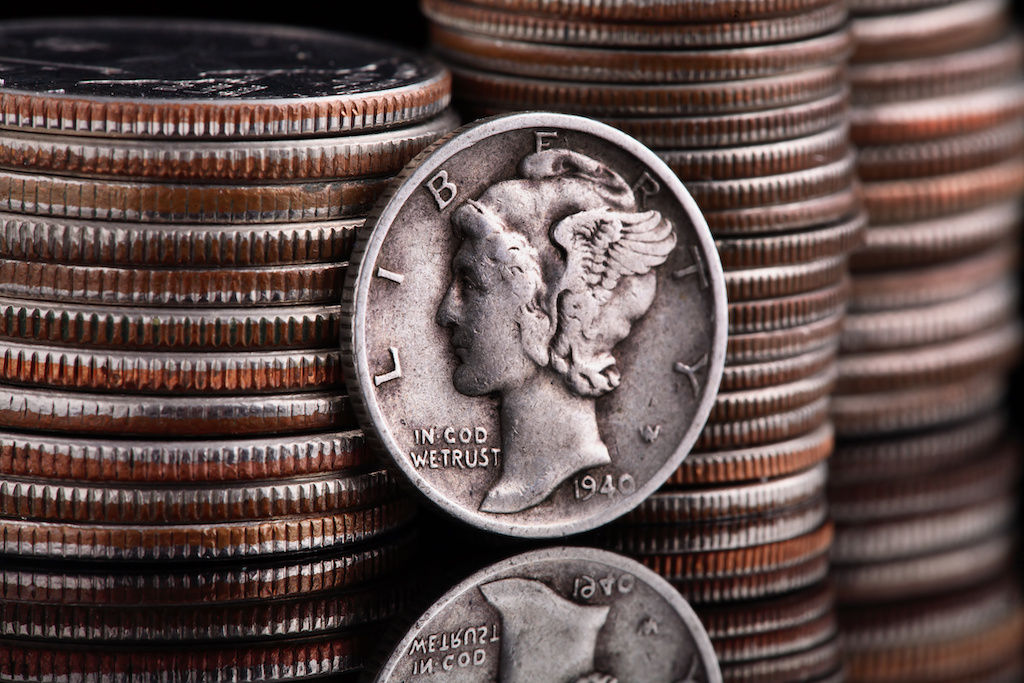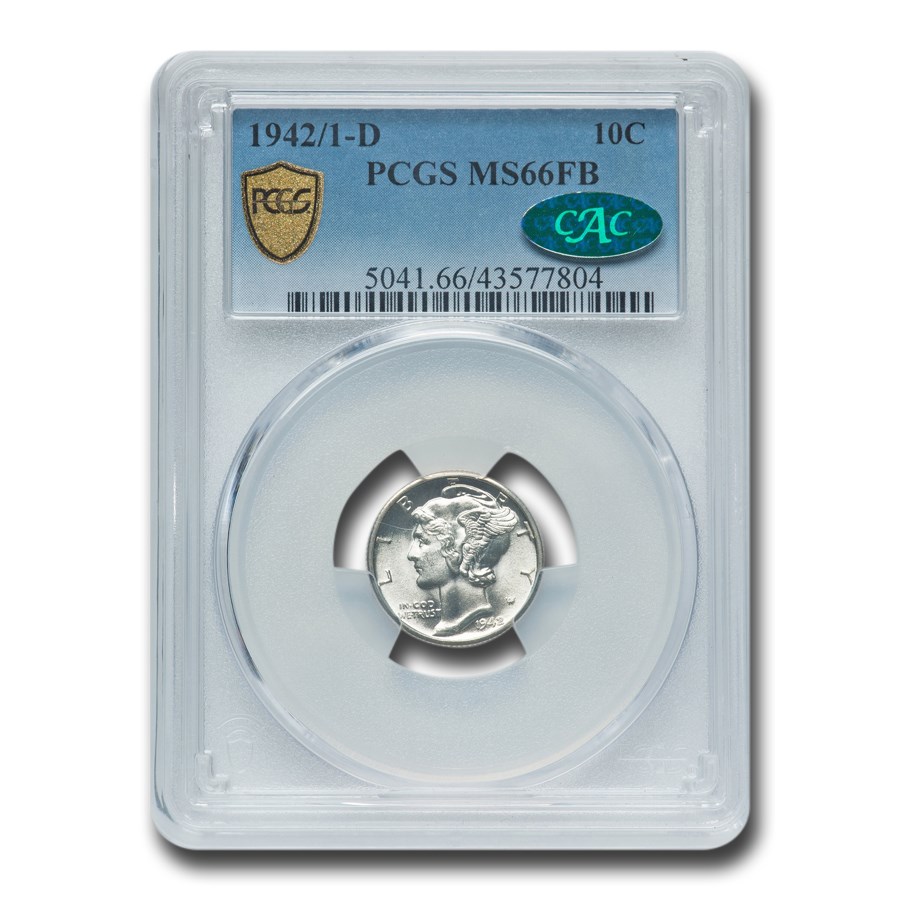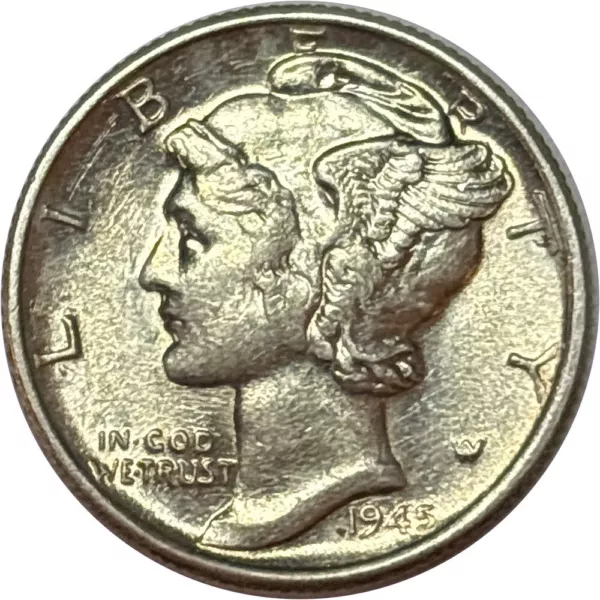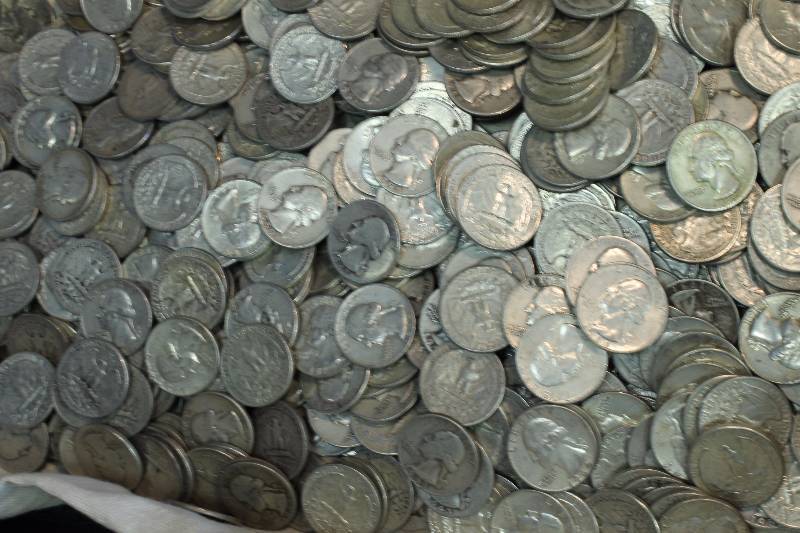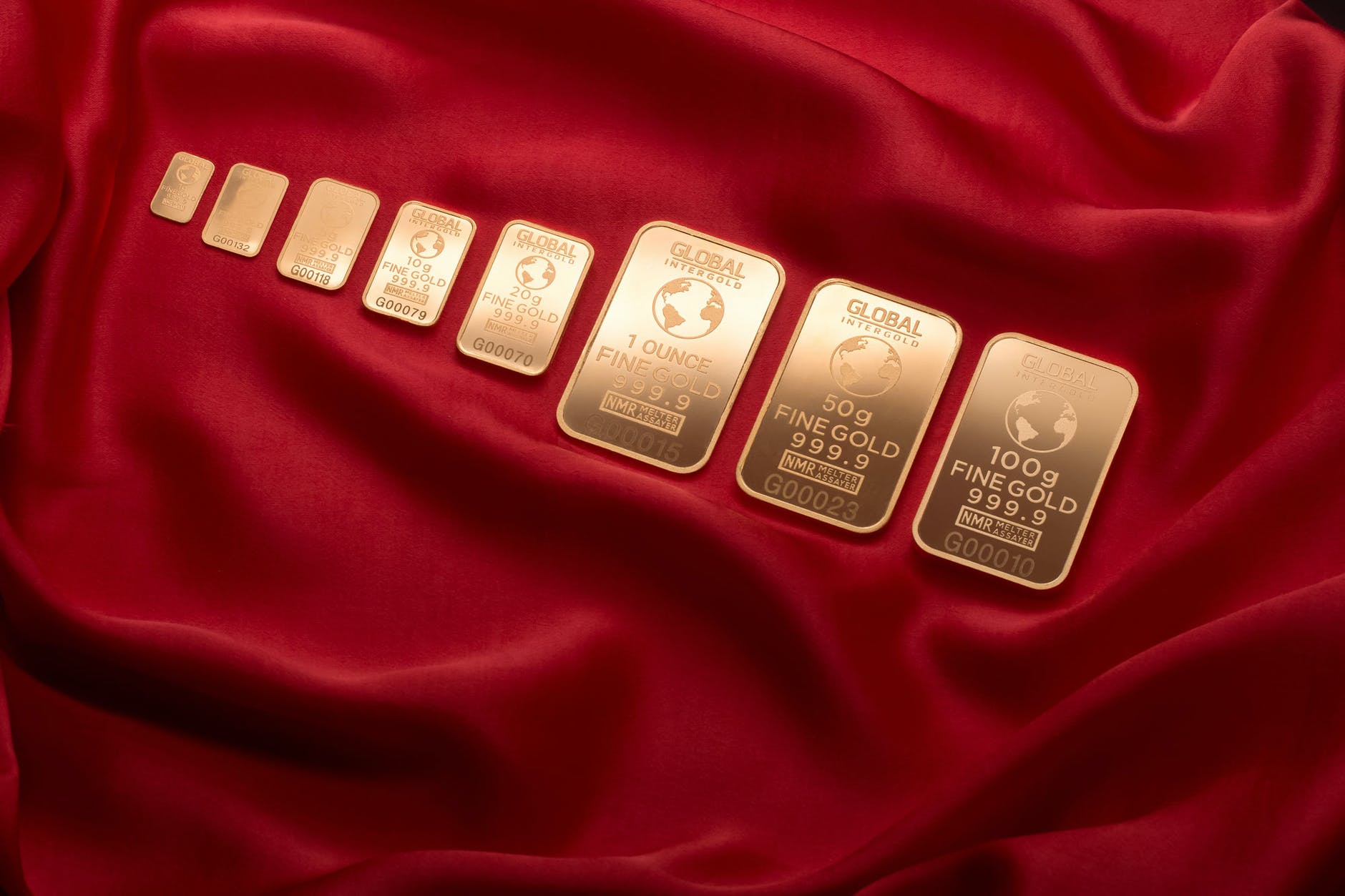Quick answer (years to know)
- All U.S. dimes dated 1964 and earlier are 90% silver (Barber 1892–1916, Mercury 1916–1945, Roosevelt 1946–1964).
- 1965–present circulation dimes are copper-nickel clad (no silver), weight 2.268 g. Proof-only silver Roosevelt dimes exist for collectors: 1992–2018 were 90% silver; 2019–present are 99.9% silver in the Silver Proof Set line.
How to identify a silver dime (fast & reliable)

- Check the date: 1964 or earlier = silver. 1965 or later = clad (with ultra-rare exceptions—see “Transitional error,” below).
- Look at the edge: silver dimes show a solid silver-colored edge; clad dimes typically reveal a copper-colored core. (Modern dimes are copper-nickel over a copper core.)
- Weigh it:
- Silver dime (1892–1964): 2.50 g (0.900 fine).
- Modern clad dime (1965–present): 2.268 g.
- Sound / magnet: silver rings with a higher-pitched “ping” and is not magnetic. (Use as supporting clues; weight/date are definitive.)
- Specific gravity (advanced): silver ≈ 10.5 g/cm³; copper-nickel clad is lower. Useful for questionable pieces.
Note: A 1965 silver dime can exist—but only as an extremely rare transitional error struck on a leftover 90% planchet. Don’t expect to find one; authenticated pieces are known.
Silver dime series (what’s silver & when)
| Series | Years in silver | Composition | Weight | Diameter |
|---|---|---|---|---|
| Barber Dime | 1892–1916 | 90% Ag / 10% Cu | 2.50 g | ~17.9 mm |
| Mercury (Winged Liberty) Dime | 1916–1945 | 90% Ag / 10% Cu | 2.50 g | ~17.9 mm |
| Roosevelt Dime (silver) | 1946–1964 | 90% Ag / 10% Cu | 2.50 g | ~17.9 mm |
| Roosevelt Dime (clad) | 1965–present | Cu-Ni over Cu (no silver) | 2.268 g | ~17.9 mm |
| Roosevelt Dime (collector silver) | 1992–2018 (Proof) | 90% Ag | 2.50 g | ~17.9 mm |
| 2019–present (Silver Proof Sets) | 99.9% Ag | 2.50 g | ~17.9 mm |
ASW (Actual Silver Weight): a brand-new 90% silver dime contains 0.07234 troy oz of pure silver. In everyday bullion trade, worn junk silver dimes are commonly estimated at 0.715 troy oz per $1 face value (10 dimes), which accounts for typical circulation wear.
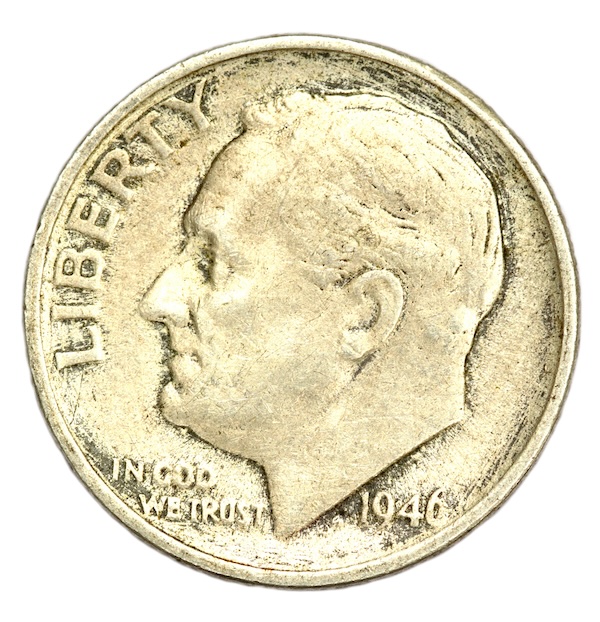
Mercury, Roosevelt & Barber: what collectors watch

- Mercury Dime (1916–1945)
Beloved design by A.A. Weinman. Key date: 1916-D (mintage ~264,000). Overdates 1942/1 and 1942/1-D are classic varieties. Prices depend entirely on grade and authentication—use PCGS CoinFacts/Price Guide for up-to-date values. - Roosevelt Dime (1946–1964 silver; 1965–present clad)
Introduced to honor FDR. Silver issues share the same weight/specs as Mercury and Barber; clad issues have 2.268 g weight and copper-nickel composition. Silver proofs return from 1992 (90%) and switch to .999 silver in 2019. - Barber Dime (1892–1916)
Classic 90% silver type designed by Charles E. Barber. Specifications match other silver dime types; high-grade survivors and low-mintage dates command premiums.
Modern cupronickel vs. modern silver dimes
- Circulation dimes (1965–present): copper-nickel clad, 2.268 g—no silver content.
- Collector silver dimes:
- 1992–2018 Silver Proofs: 90% silver, minted for sets.
- 2019–present Silver Proofs: 99.9% silver per U.S. Mint change; the Mint explicitly announced the .999 fineness upgrade starting with the 2019 Silver Proof Set.
Silver dime values (melt vs. collector value)
- Melt value tracks the spot price of silver × ASW.
- Theoretical ASW per dime: 0.07234 ozt when uncirculated.
- Bullion market convention for mixed circulated dimes: $1 face = 0.715 ozt (so one dime ≈ 0.0715 ozt assumed). For example, APMEX lists a $50 FV Mercury dime bag at 35.75 ozt (50 × 0.715).
- Numismatic value depends on date, mintmark, variety, grade, and eye appeal. For pricing, rely on current professional guides and recent auction comps (e.g., PCGS CoinFacts / Price Guide and TPG-graded sales).
Educational only, not financial advice. Always verify authenticity and condition; values change with the silver market and collector demand.
FAQs (built from common searches)
What year did they stop making silver dimes?
1964 is the final year. Beginning 1965, regular dimes are copper-nickel clad with no silver.
What years are silver dimes?
All dimes 1964 and earlier (Barber, Mercury, and 1946–1964 Roosevelt) are 90% silver.
Is a 1965 dime silver?
No, unless it’s an ultra-rare transitional error struck on a leftover silver planchet. Authenticated examples exist but are exceptionally scarce.
How much does a silver dime weigh?
2.50 grams (gross). Modern clad dimes weigh 2.268 grams.
How much silver is in a silver dime?
ASW is 0.07234 troy oz (new). In practice, bullion sellers often calculate 0.715 troy oz per $1 face for circulated 90% coinage.
Are there modern silver dimes?
Yes—collector-only proofs. From 1992–2018 they were 90% silver; 2019–present proof dimes in Silver Proof Sets are .999 silver.
Best way to tell if my dime is silver?
Check the date (≤1964), look for a solid silver edge (no copper line), and confirm the 2.50 g weight.
Collector Tips
- Don’t use 28.35 g/oz (regular ounce) in melt math, bullion uses troy ounces.
- Read the fine print: a listing that says “oz” in bullion almost always means troy ounce.
- Authenticate better dates/varieties (e.g., 1916-D, 1942/1) with reputable dealers or grading services.
- For junk silver buys, know the dealer convention ($1 FV ≈ 0.715 ozt) and compare premiums across shops before purchasing.
Where to compare real-time prices
Silver dimes trade in assorted face-value lots ($1, $5 rolls, $100, etc.) and by type (Barber/Mercury/Roosevelt). FindBullionPrices.com aggregates dealer offers so you can quickly spot the lowest premium and choose between rolls, bags, or mixed lots from reputable U.S. sellers.
